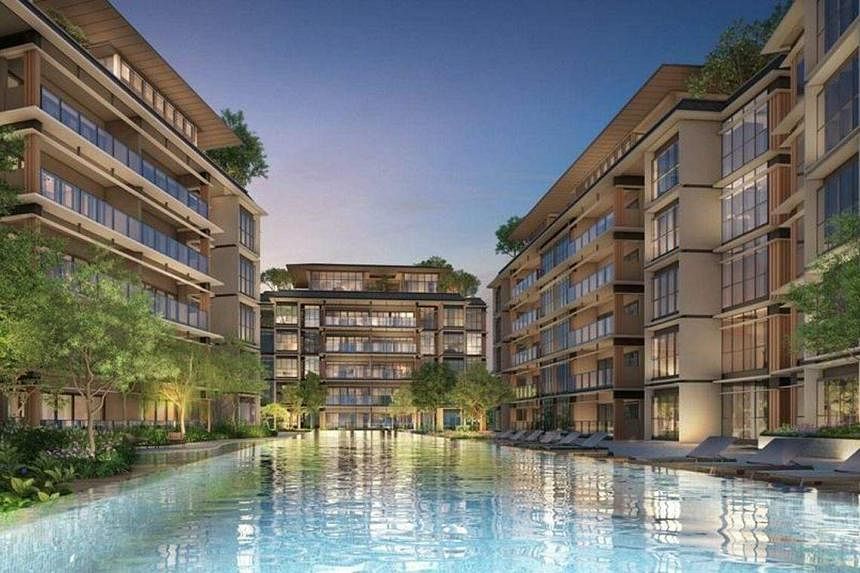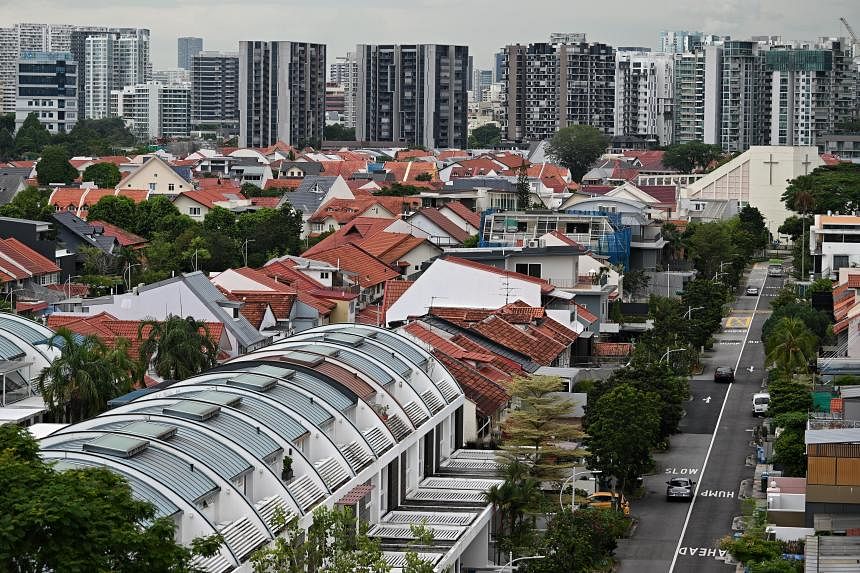SINGAPORE – Private home prices continued to moderate for a second straight year, growing at a slower pace of 6.7 per cent in 2023, compared with 8.6 per cent in 2022, even as transaction volumes shrank.
The number of units sold in 2023 fell by about 15 per cent from the year before, to the lowest level since 2016, dampened by several rounds of cooling measures, softer economic conditions and elevated mortgage rates.
Powering 2023’s price gains was the suburban non-landed market, which jumped 13.8 per cent, while the prime and city fringe markets grew at modest paces of 2.1 per cent and 2.7 per cent, respectively, said Ms Tricia Song, CBRE’s head of research for Singapore and South-east Asia.
She noted that private home prices have moved ahead of advance estimates of 1.2 per cent economic growth for 2023, as pent-up local demand and slower supply from 2020 to 2022 offset higher interest rates and cooling measures.
But analysts expect overall price growth to slow further in 2024 as price resistance sets in and more new home supply hits the market.
In the fourth quarter, private residential property prices rose by 2.7 per cent after a 0.8 per cent gain in the third quarter, according to Urban Redevelopment Authority (URA) flash estimates released on Jan 2.
New benchmark price records set at some major new launches helped fuel the rise in non-landed prices in the suburbs and the prime district in the fourth quarter.
Strong demand for three major non-landed launches in November 2023 – Hillock Green, J’den and Watten House – fuelled price gains in the fourth quarter, said Mr Lee Sze Teck, Huttons Asia’s senior director for data analytics.
Prices of non-landed private homes were at a historic peak in the fourth quarter – about 30 per cent higher, compared with pre-pandemic levels, Mr Wong Xian Yang, Cushman & Wakefield’s head of research for Singapore and South-east Asia, noted.
“Prime district, city fringe and suburban non-landed home prices are cumulatively up by 11 per cent, 37 per cent and 40 per cent, respectively. While fixed mortgage rates have come down slightly, these remain high and will continue to weigh on buyers’ affordability,” he said.
The number of units sold fell for a second straight quarter, down by 27 per cent in the fourth quarter against the previous quarter. Excluding executive condominiums, 1,048 new private homes were sold in the fourth quarter, down 46.1 per cent from the 1,946 moved in the third quarter, according to URA Realis data on Jan 2.
Given thinner sales volumes, the high benchmark prices achieved by a few new launches would move the needle significantly, said Mr Nicholas Mak, chief research officer of property search portal Mogul.sg.
He noted that the high prices set by new launches such as Watten House would have a magnified impact on prime district prices, even as demand from foreigners fell after the additional buyer’s stamp duty doubled to 60 per cent for such buyers in April 2023.

Watten House sold 114 units at a median price of $3,204 per sq ft (psf) and was over 60 per cent sold in the fourth quarter, while J’den sold 327 units at a median price of $2,479 psf and is close to 90 per cent sold, according to Cushman & Wakefield.
Although the Government has emphasised that it has increased the land supply for more homes to be launched, that may not cool the market “as it is the high prices of new launches that have driven up prices”, Mr Mak said.
He predicted that the residential property price index could continue to rise 6 per cent to 8 per cent in 2024, if the Singapore economy, employment and household incomes continue to grow.
URA’s flash estimates showed landed property prices gained 4.5 per cent in the fourth quarter, reversing a 3.6 per cent drop in the previous quarter. In the non-landed segment, prices of private homes were up 2.2 per cent in the fourth quarter, unchanged from the previous quarter.
For the whole of 2023, prices of non-landed properties gained 6.5 per cent, moderating from an 8.1 per cent increase in 2022.
The absence of new launches pared prices of non-landed private homes in the city fringe by 1.2 per cent in the fourth quarter, reversing a 2.1 per cent gain in the third quarter, while those in the suburbs grew at a slower pace of 4.6 per cent, compared with 5.5 per cent in the third quarter.
In contrast, prime district prices jumped 4.2 per cent in the fourth quarter, reversing a loss of 2.7 per cent in the previous quarter.
Singaporeans and permanent residents made up 98.5 per cent of purchasers in the fourth quarter, while foreigners accounted for 1.5 per cent, according to Huttons.
Based on URA caveats, the number of private homes bought by foreigners tumbled to a 12-year low of 62 in the fourth quarter compared with 271 in the first quarter of 2023, Mr Lee said.
Buyers from America overtook those from China to become the biggest group of foreigners buying private property here in the second half of 2023. US nationals are accorded the same stamp duty treatment as Singapore citizens under a free trade agreement between the United States and Singapore, he added.
The number of Chinese buyers plummeted to 11 in the second half of 2023 compared with 177 in the first half, he added.
Even as buyer affordability takes a hit amid higher prices and higher interest rates, ERA Singapore’s key executive officer Eugene Lim expects demand to return with widely expected interest rate cuts in the second half of 2024.
Analysts said home sales in 2024 will be driven by owner-occupiers and the local market, with cooling measures keeping investors and foreign buyers at bay.
In view of subdued home sales in 2023 and a bigger pipeline of new launches this year, developers are expected to price units more sensitively, said PropNex chief executive Ismail Gafoor.
Correction note: This article has been corrected to reflect that private residential property prices – not prices of non-landed homes – rose by 2.7 per cent in Q3. It was also stated that in the non-landed segment, prices of suburban private homes were up 2.2 per cent in Q4. This is incorrect. It should be prices of private homes. We are sorry for the errors.


